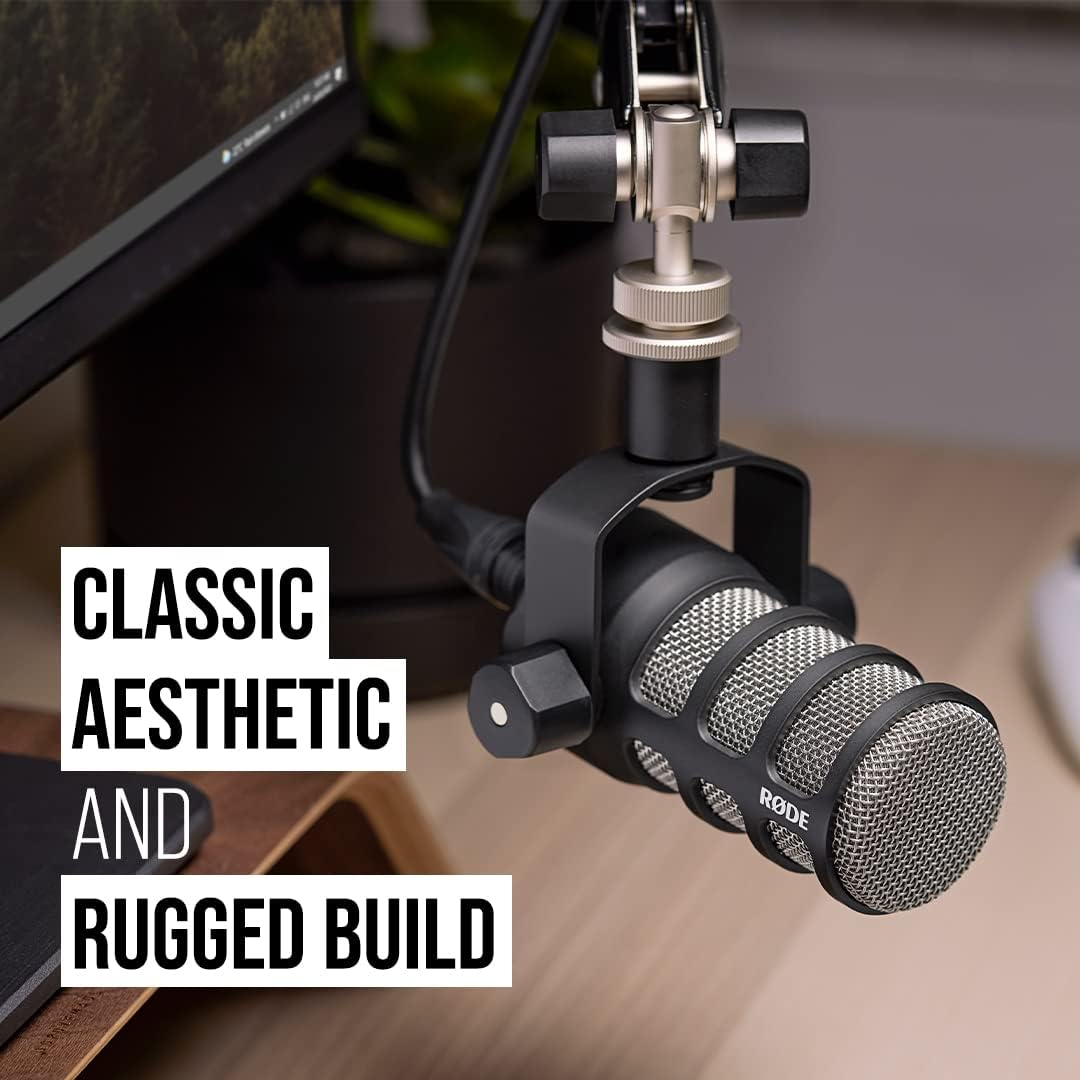Rode PodMic vs. Shure MV7+ (And What’s New vs the Original MV7)
Choosing the right microphone can define the quality of your podcast or voice content. If you’re comparing the Rode PodMic with the newer Shure MV7+, you’re likely weighing affordability versus flexibility, simplicity versus built-in features. In this post, we’ll break down the key differences, explore what’s new in the MV7+, and help you decide which mic fits your needs.
 Click Here for Detailed Specs on Shure MV7+
Click Here for Detailed Specs on Shure MV7+
Quick Comparison: Rode PodMic vs Shure MV7+
| Feature | Rode PodMic | Shure MV7+ |
|---|---|---|
| Connection | XLR only | USB-C & XLR |
| Onboard DSP | No | Yes: Reverb, Denoiser, Pop Filter, Auto Level |
| Software Support | None | Shure MOTIV Mix (multi-track, mixer, EQ, FX) |
| Build & Design | All-metal, rugged | Premium metal body, RGB mute panel, longer grille |
| Use Case | Studio setups with interface | All-in-one creator setups, live streaming, travel |
| Price Range | ~$100–$120 | ~$280–$300 |
Rode PodMic: Simple, Solid, and Built to Last
The Rode PodMic is an XLR-only dynamic microphone purpose-built for podcasting and broadcasting. With its robust metal construction, internal pop filter, and excellent background noise rejection, it remains one of the best values for creators who already have an audio interface.
Pros:
- Affordable and durable
- Excellent vocal clarity for voiceovers
- No software or drivers needed
Cons:
- Requires an audio interface
- No onboard DSP or customization
Ideal for: Podcasters on a budget, fixed home studios, voiceover artists using XLR setups.
Shure MV7+: Next-Gen Flexibility for Modern Creators
Shure’s new MV7+ builds on the popularity of the original MV7 with upgraded internals, better connectivity, and powerful real-time DSP features.
What’s New in the MV7+:
- USB-C replaces Micro-USB for better compatibility and durability
- Real-Time DSP: Built-in Denoiser, Digital Pop Filter, Reverb FX
- Touch Panel Enhancements: Tap-to-mute with customizable RGB lighting
- MOTIV Mix Software: Multi-track recording, virtual mixing, sound customization
Pros:
- Hybrid connectivity (USB-C + XLR)
- Great for live streamers, solo creators, and podcasting
- Out-of-the-box sound polish, no interface required
Cons:
- Higher price point
- Not suited for instrument or multi-voice group recordings
Ideal for: Content creators needing plug-and-play ease with pro-level sound control.
MV7+ vs Original MV7: Key Differences
| Feature | MV7 (Original) | MV7+ |
|---|---|---|
| USB Port | Micro-USB | USB-C |
| DSP Capabilities | Basic (via app) | Advanced: Reverb, Pop Filter, Denoiser |
| Pop Protection | Standard windscreen | Longer grille, Digital Pop Filter built-in |
| Touch Controls | Physical sliders | Tap-to-mute + RGB lighting |
| Software | ShurePlus MOTIV | Shure MOTIV Mix |
MV7+ is more creator-focused, offering polished sound and convenience — especially for those who don’t want to tinker with external processing or plugins.

Click Here for Detailed Specs on PodMic
Which Should You Choose?
Choose the PodMic if:
- You already have an audio interface
- You prefer analog gear and plan to EQ or mix in post
- You want maximum value under $150
Choose the MV7+ if:
- You want USB and XLR options
- You need built-in DSP and easier setup
- You plan to stream, travel, or record in less-than-ideal spaces
Already have an MV7? If you felt limited by Micro-USB, missed advanced EQ or noise control, or found the interface too basic — the MV7+ solves all of that.
Final Thoughts
Both the Rode PodMic and the Shure MV7+ are exceptional microphones aimed at voice-first creators. The PodMic continues to punch above its price point with analog reliability, while the MV7+ brings high-end digital control and a seamless user experience. Choose the one that fits your workflow, gear, and growth plans.